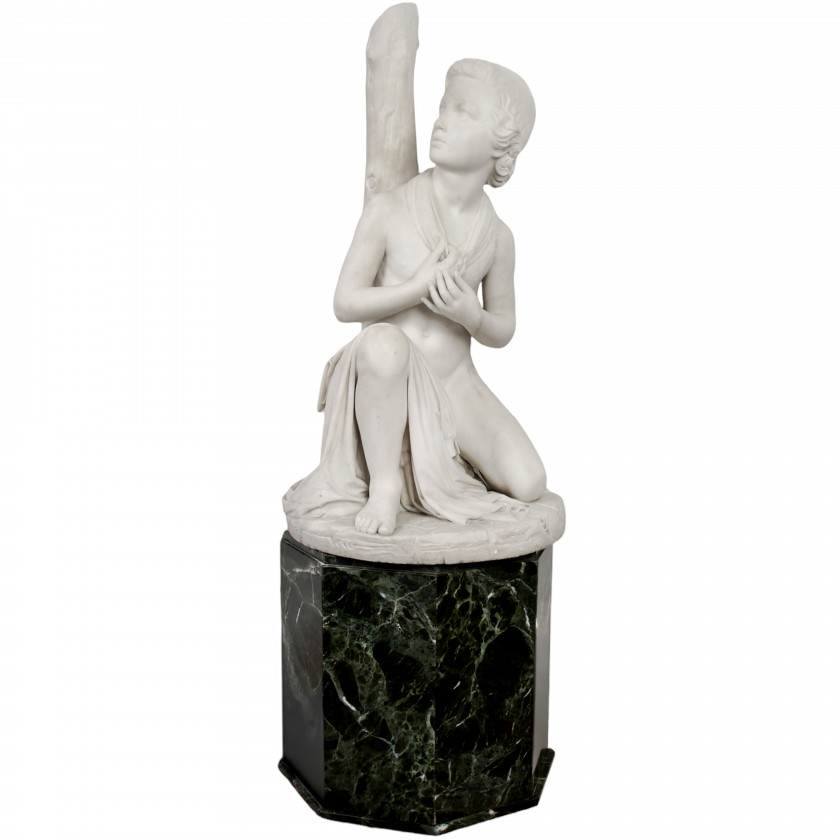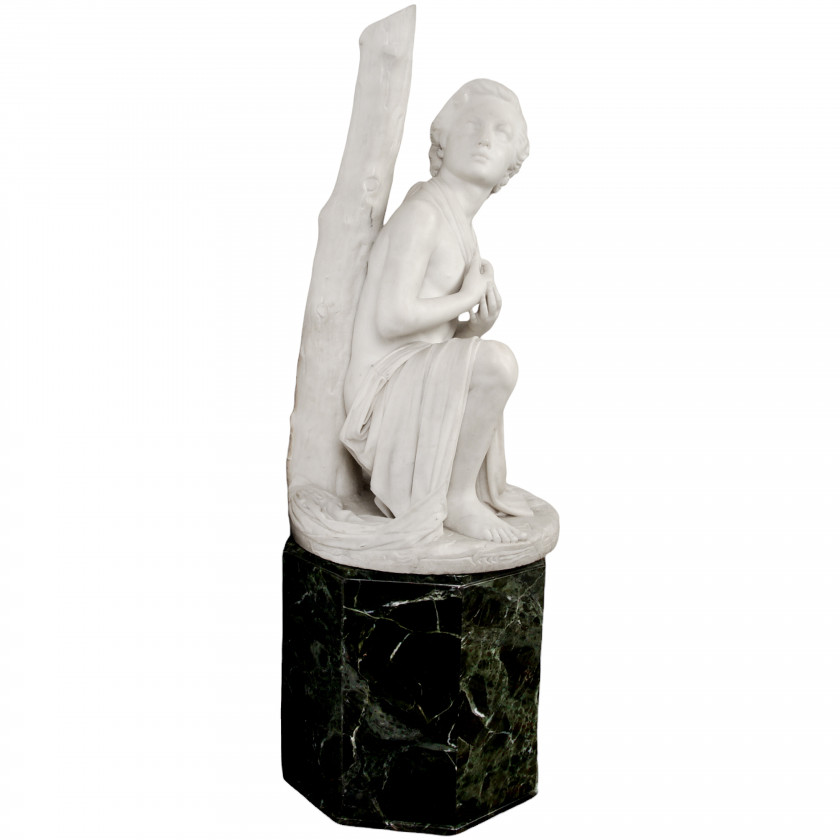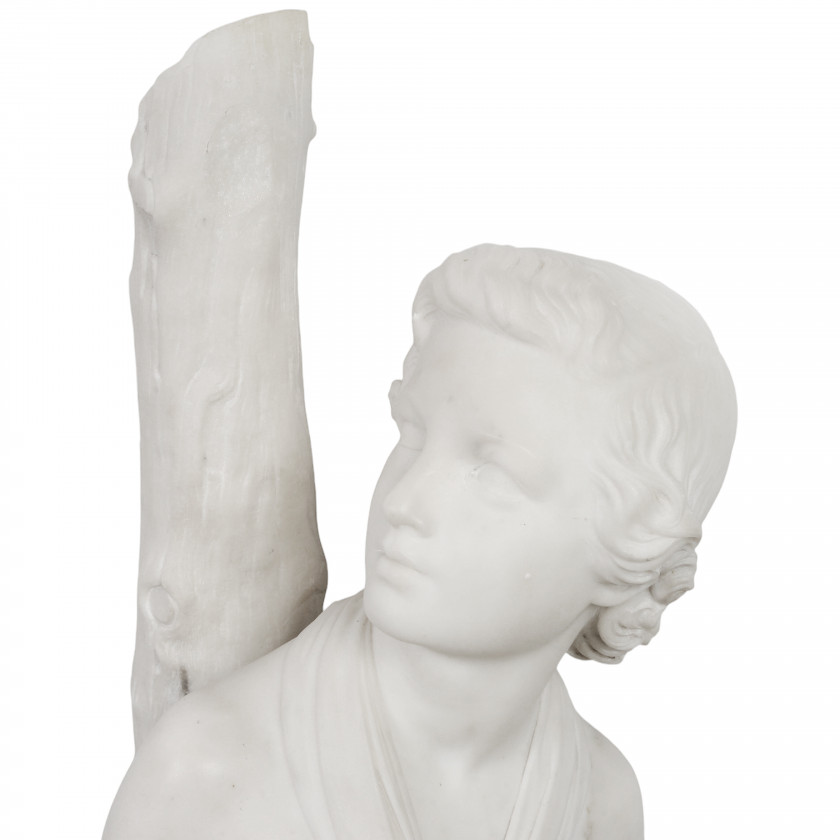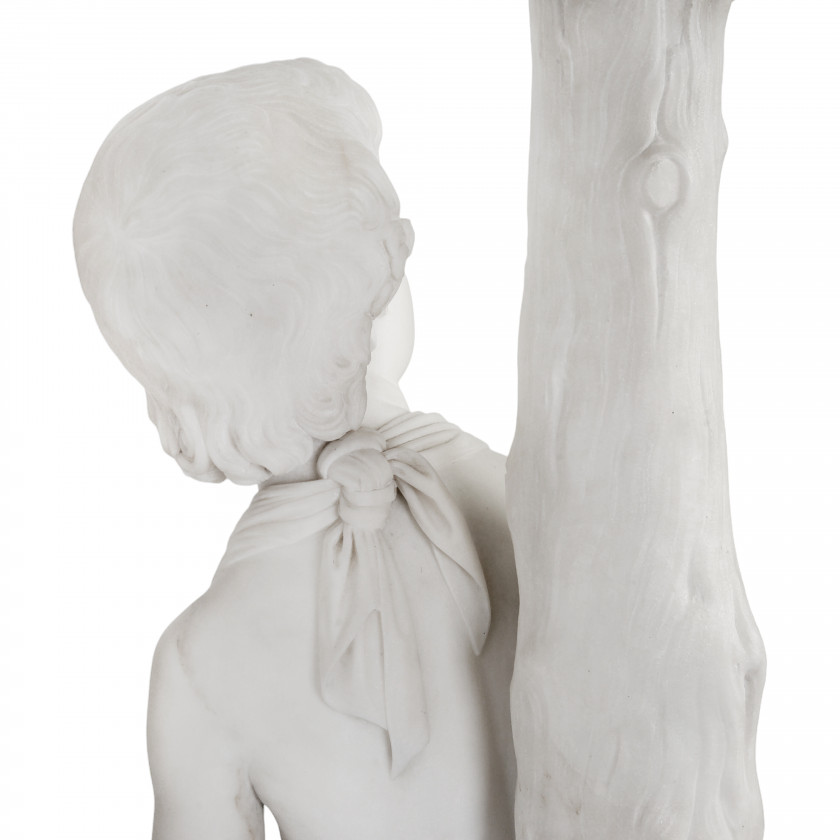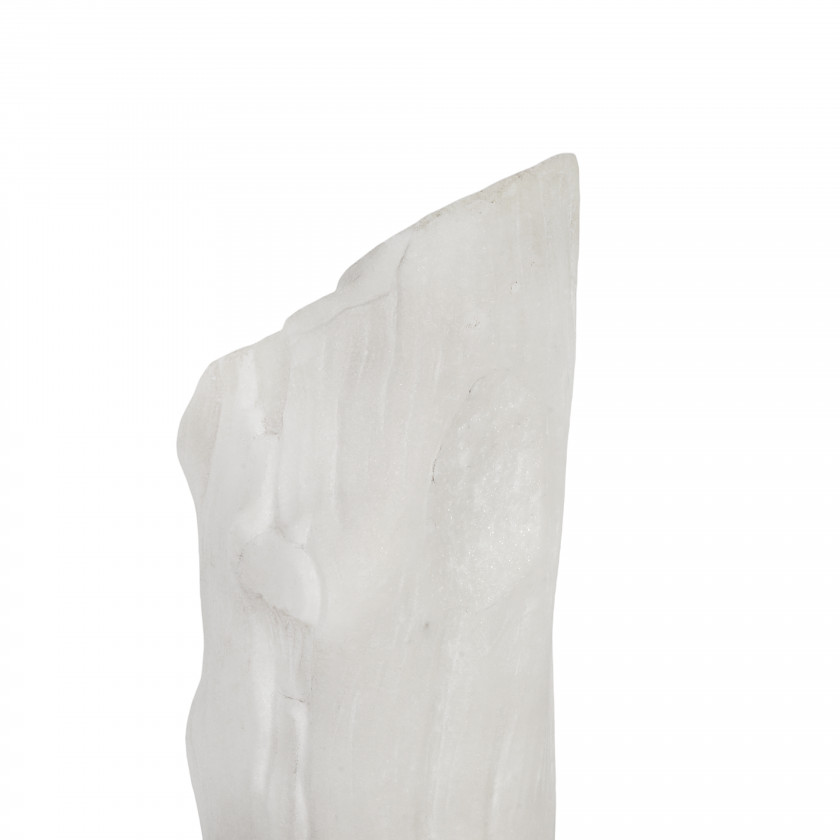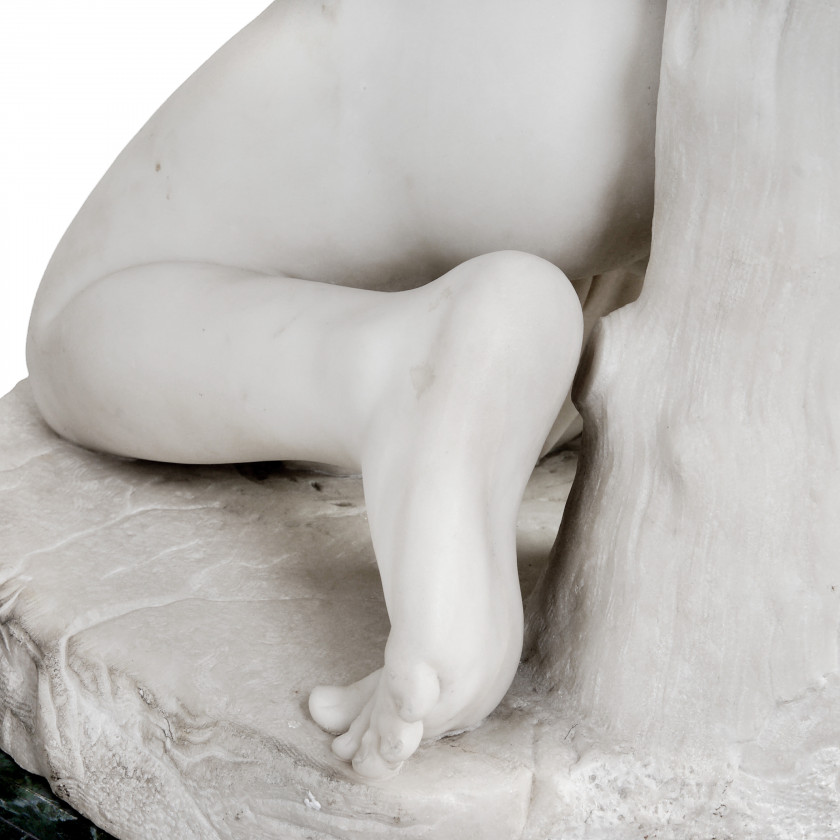Marble figure "The son of William Tell"
Artist/Maker: Pasquale Romanelli
Artist/Maker Dates: 1812 - 1887
Place of Production: Italy
Date of Production: 1858
Materials: marble
Height: 103 cm., 153 cm.
Condition:
Condition notes: Lost an apple on a tree
Description
Pasquale Romanelli was born in Florence on May 28, 1812. When he was 15 years old, he entered the studio run by Master Sculptor Luigi Pampaloni and later moved to Lorenzo Bartolini’s studio in Borgo San Frediano. Lorenzo Bartolini was a teacher at the Accademia in 1837 and suggested to the young pupil to attend proper sculpture training at the Accademia of Belle Arti. Soon, he learned to sculpt in marble at such a high level that Bartolini himself did not need to finish his pieces if they had been carved by Pasquale.
In 1840, he got his studio at the San Barnaba Monastery (near the San Lorenzo church), and in these years, he already became involved in political life; sure enough, his subjects were connected to his political ideas of freedom and the independence of Italy. In 1850, Lorenzo Bartolini died. His heirs had to deal with several unfinished sculptures and sort out how to complete them without distorting either the original project or the master’s style. As Bartolini was very jealous of his “last touch,” the heirs chose Pasquale Romanelli to complete most of his works, as he was the only assistant who could match the master's ability. According to tradition, just to mention some of these works, the famous sculpture “La Fiducia in Dio,” now housed at the Hermitage Museum, was sculpted by Pasquale Romanelli from an original model by Bartolini, as well as the “Monumento Demidoff” placed in Piazza Demidoff in Florence. Till the end of his life, he worked on several commissions, including public monuments like the sculpture of Francesco Ferrucci (Portico degli Uffizi) and private ones, mostly sold abroad. He was a renowned portraitist, and according to tradition, luxury carriages used to stand for a long time in front of his studio, waiting for their owners (noblemen and wealthy people from Italy and Europe) posing for a portrait. He was also appointed to make the bust of Lorenzo Bartolini (1858), housed in Santa Croce Church in Florence. In 1868, he, too, was appointed Professor of Sculpture at the Academy of Fine Arts in Florence. Among his works, we remember The Sons of Mrs. Whyte, the bust of King Vittorio Emanuele II, the portrait of Prince Albert (consort of Queen Victoria), the monument to Vittorio Fossombroni for Piazza di S. Francesco in Arezzo (1863), and the monument of Count Alessandro Masi for the Certosa of Ferrara (1864). For the Romantic genre, he produced Paolo and Francesca (1860), Ophelia, Joan of Arc, Ruth, Napoleon as a Child (presented at the Paris Universal Exposition of 1867), Benjamin Franklin as a Child, and The Boy Washington (bought by Prince Amedeo of Savoy), Bianca Cappello and Pietro Bonaventuri. He also made the portrait of Bartolini on his sepulchre in the church of Santa Croce. He worked almost until his death on February 11, 1887. His funeral monument in the Cemetery of the Porte Sante was the work of his son, Raffaello.
William Tell was a farmer and Swiss folk hero. He stands as a symbol of political freedom; there is a bronze statue of him in Uri, a mountain village that is the birthplace of modern Switzerland. As the country's founding father, Tell is both legend and legendary. As the story goes, in 1307, an agent of the Hapsburg duke of Austria placed a Hapsburg hat on a pole and ordered passersby to remove their caps. Tell refused and was then ordered to shoot an apple off his son's head with an arrow at 120 paces or else he and his son would both be killed. Tell obliged and succeeded in hitting the apple off his son's head in a single shot.
What happened next kicked off a revolution among the poor medieval inhabitants and led to an overthrow of capricious foreign rule. The agent asked Tell why he had a second arrow in his jacket, to which Tell replied, "If the first arrow had killed my son, I would have shot the second at you, and I would not have missed."
Shipping details
- Log in to see the cost for shipping this lot to your address.
Shipping methods are determined by item size, type, fragility and specific characteristics.
Shipping costs are calculated based on carrier rates, delivery distance and packing complexity.
Payment details
Doma Antikvariāts accepts the following payment methods:





